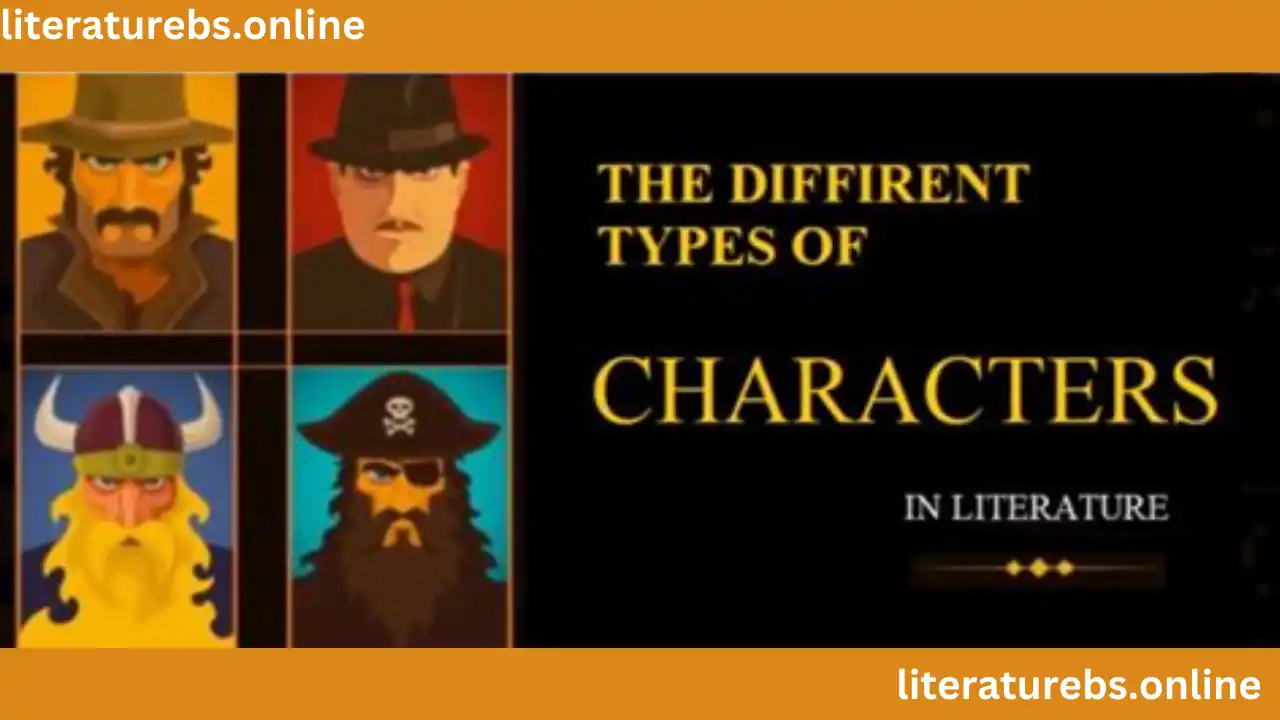Types of Characters:
In English literature, characters serve as the lifeblood of storytelling, driving narratives forward and embodying the complexities of the human experience. From the valiant hero to the cunning antagonist, characters come in various forms, each fulfilling distinct roles and contributing to the richness of literary works. Understanding the types of characters found in literature provides insight into their functions, motivations, and symbolic significance within the text.
This exploration allows readers to appreciate the depth and diversity of character portrayal, from nuanced protagonists grappling with internal conflicts to archetypal figures embodying timeless themes. Through an examination of these character types and their best examples in English literature, we can delve into the fundamental elements that shape our understanding of narrative and humanity itself.
Protagonist:
The central character around whom the story revolves. The protagonist is often the hero or heroine of the story and is typically involved in the main conflict.
- Example: Sherlock Holmes from Arthur Conan Doyle’s “Sherlock Holmes” series. Holmes, with his brilliant deductive reasoning and unorthodox methods, stands as an iconic figure in detective fiction, captivating readers with his intellect and eccentricities.
Antagonist:
The character or force that opposes the protagonist. Antagonists can be villains, adversaries, or obstacles that the protagonist must overcome.
- Example: Iago from William Shakespeare’s “Othello” is a master manipulator whose envy and deceit lead to tragic consequences for the titular character. Iago’s Machiavellian schemes highlight the destructive power of jealousy and betrayal.
Foil:
A character who contrasts with another character, usually the protagonist, to highlight particular qualities of the main character. Foils often serve to emphasize the strengths or weaknesses of the protagonist.
- Example: Dr. John Watson from Arthur Conan Doyle’s “Sherlock Holmes” stories contrasts Holmes’s deductive genius with his pragmatism and empathy, underscoring Holmes’s brilliance and the challenges he faces in relating to others.
Sidekick:
A supportive character who accompanies the protagonist on their journey and provides assistance, comic relief, or moral support.
- Example: Sancho Panza from Miguel de Cervantes’s “Don Quixote” serves as the loyal and comedic companion to the delusional knight-errant Don Quixote, providing a down-to-earth perspective amidst Quixote’s fanciful adventures.
Love Interest:
A character who is romantically involved with the protagonist or another main character. Love interests often play a significant role in the protagonist’s development and the overall plot.
- Example: Romeo and Juliet from William Shakespeare’s tragedy of the same name represent the quintessential star-crossed lovers whose passionate romance transcends societal barriers but ultimately ends in tragedy.
Mentor:
An older, wiser character who guides and advises the protagonist, often providing wisdom, training, or moral guidance.
- Example: Gandalf from J.R.R. Tolkien’s “The Lord of the Rings” trilogy guides and inspires Frodo Baggins on his perilous quest to destroy the One Ring, embodying wisdom, courage, and selflessness.
Dynamic Character:
A character who undergoes significant internal change or growth throughout the story. Dynamic characters often experience a transformation in their beliefs, values, or personality.
- Example: Ebenezer Scrooge from Charles Dickens’s “A Christmas Carol” undergoes a profound transformation from a miserly and cold-hearted misanthrope to a compassionate and generous benefactor after encountering the ghosts of Christmas Past, Present, and Yet to Come.
Static Character:
A character who remains unchanged throughout the story. Static characters typically do not experience significant internal development and serve to provide stability or contrast to dynamic characters.
- Example: Mr. Collins from Jane Austen’s “Pride and Prejudice” remains obstinately self-important and socially inept throughout the novel, serving as a comedic foil to the more dynamic and nuanced characters around him.
Round Character:
A fully developed and multifaceted character who exhibits a range of emotions, motivations, and complexities. Round characters are often realistic and believable, with depth and nuance.
- Example: Elizabeth Bennet from Jane Austen’s “Pride and Prejudice” is a complex and multidimensional character whose intelligence, wit, and moral integrity distinguish her as one of literature’s most beloved heroines.
Flat Character:
A relatively simple and one-dimensional character who lacks depth and complexity. Flat characters are often defined by a single trait or characteristic and serve a specific function in the story.
- Example: Mrs. Micawber from Charles Dickens’s “David Copperfield” is characterized by her perpetual optimism and reliance on her husband, Mr. Micawber, lacking significant depth or development beyond her role as a supporting figure.
Stock Character:
A stereotypical character who embodies a common archetype or role. Stock characters are often predictable and may lack depth, but they serve familiar narrative functions and are easily recognizable to audiences.
- Example: The “Byronic hero,” as seen in the character of Heathcliff from Emily Brontë’s “Wuthering Heights,” embodies the archetype of the brooding, passionate, and morally ambiguous outsider who defies societal norms and conventions.
Antihero:
A protagonist who lacks traditional heroic qualities may exhibit morally ambiguous or even villainous behavior. Antiheroes often challenge conventional notions of heroism and morality.
- Example: Jay Gatsby from F. Scott Fitzgerald’s “The Great Gatsby” is a mysterious and enigmatic figure whose pursuit of wealth and love leads to tragic consequences, challenging traditional notions of heroism and morality.
Conclusion:
Characters are the heart and soul of literature, breathing life into stories and captivating readers with their complexities, motivations, and interactions. From the noble hero to the nefarious villain, characters come in myriad forms, each serving a distinct role in shaping narrative arcs and exploring themes of identity, morality, and society.
Through their struggles, triumphs, and transformations, characters invite readers into worlds both familiar and fantastical, providing insights into the human experience and the universal truths that bind us together.
